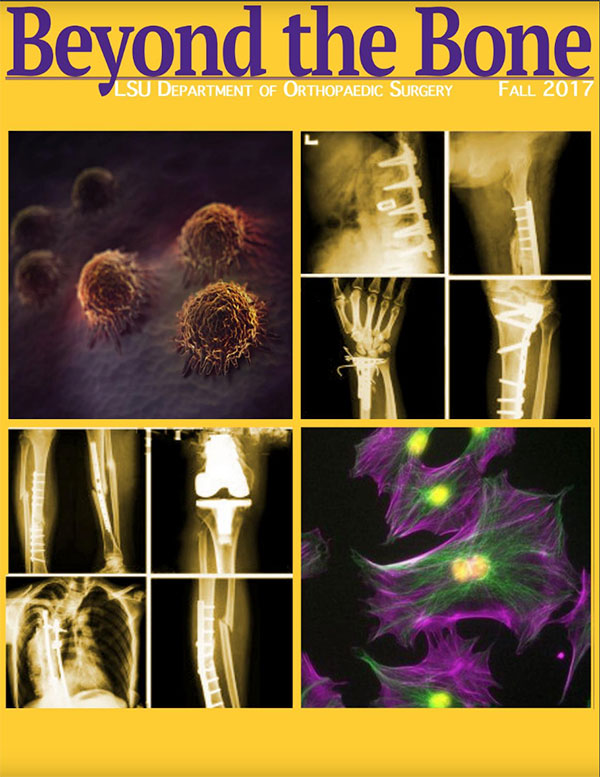Study Helps Surgeons Determine Optimal Approach for Broken Hips
New Orleans, - Robert Zura, MD, Professor and Chair of Orthopaedics at LSU Health New Orleans School of Medicine, was part of an international collaborative study group whose findings will help orthopaedic surgeons identify the best individual approach to treat broken hips in those over age 50. The study provides a head-to-head comparison of the two techniques used to replace displaced femoral neck fractures in this vulnerable population and reports similar rates of outcome measures between the two. The conclusion was: “Incidence of secondary procedures did not differ significantly between patients who were randomly assigned to undergo total hip arthroplasty and those who were assigned to undergo hemiarthroplasty, and total hip arthroplasty provided a clinically unimportant improvement over hemiarthroplasty in function and quality of life over 24 months.” The findings are published online in the New England Journal of Medicine, available here. Dr. Zura was one of four and the only U. S. physician presenting the findings Thursday afternoon at the Orthopaedic Trauma Association 2019 Annual Meeting in Denver.
“Our study found that partial replacement, or hemiarthroplasty, is a viable alternative that may mitigate early risk of dislocation as well as cost,” notes Dr. Zura.
As the U.S. population ages, hip fractures increase, and hip fractures are now occurring with high frequency in the United States. Each year, more than 300,000 Americans older than 65 are hospitalized for broken hips.
Zura, who served as Chair of the Adjudication Committee and was a member of the Writing Committee, says, “Hip fractures can rob people of function, their independence and even their lives. It is critical that we do this and we do this well. So, under the leadership of Dr. Mohit Bhandari at McMaster University, we conducted an expertise-based randomized control trial at 80 centers in 10 countries to best understand the options for this population.”
The American Academy of Orthopaedic Surgeons and National Institute for Health and Care Excellence guidelines currently recommend total hip replacement (arthroplasty) in all independent ambulators with displaced femoral neck fractures. Total hip replacement can afford patients optimal functionality. But, there have been concerns that this approach can also be associated with an increased risk of dislocation requiring a second procedure, as well as a higher risk of illness.
Between January 2009 and May 2017, the researchers randomly assigned 1,495 patients over age 50 with displaced femoral neck fractures to receive either total hip replacements (arthroplasty) or replacements of only the femoral head (hemiarthroplasty.) Outcomes measured included whether a second hip procedure was needed within 24 months, death, serious adverse events, hip-related complications, quality of life, function and health.
The researchers found comparable rates of secondary procedures and similar rates of the other outcomes measured. The authors wrote: “We that the type of arthroplasty had no significant influence on the risk of unplanned secondary hip procedures over 24 months. Functional end points favored total hip arthroplasty over hemiarthroplasty during the 24-month period. Patients who underwent total hip arthroplasty had a slightly higher incidence of serious adverse events.-arthroplasty”
“Taking care of elderly hip fracture patients is one of the greatest responsibilities of orthopaedic surgeons,” adds Zura. “We meet frail folks at a most vulnerable time. This study truly helps us identify the methods that allow us to determine the optimal surgical approach to restore these folks' health, activity, functionality and independence.”
The research was funded by the Canadian Institutes of Health Research, the National Institutes of Health and others.



